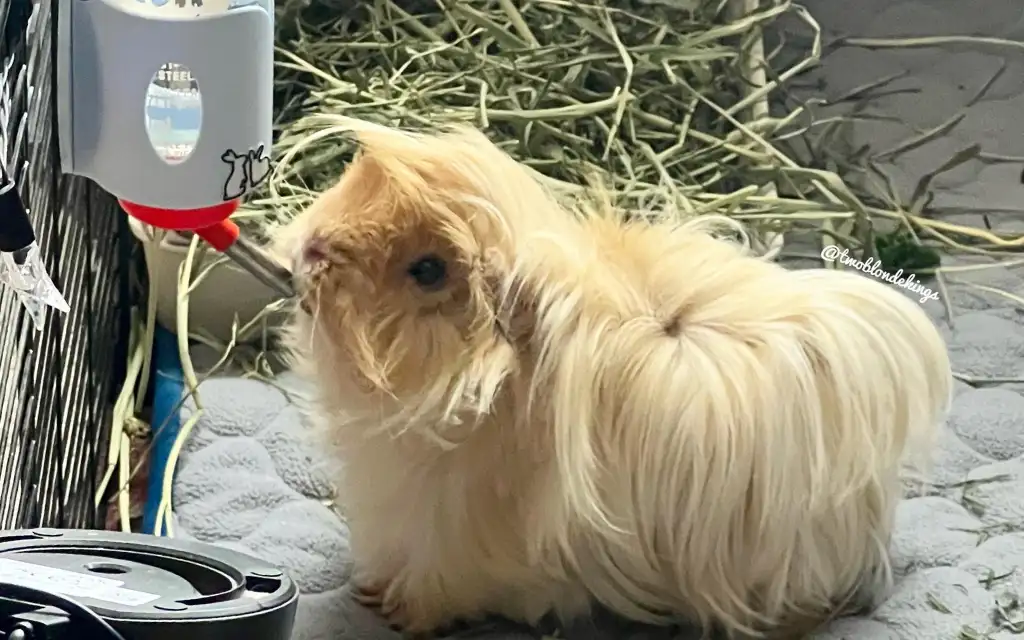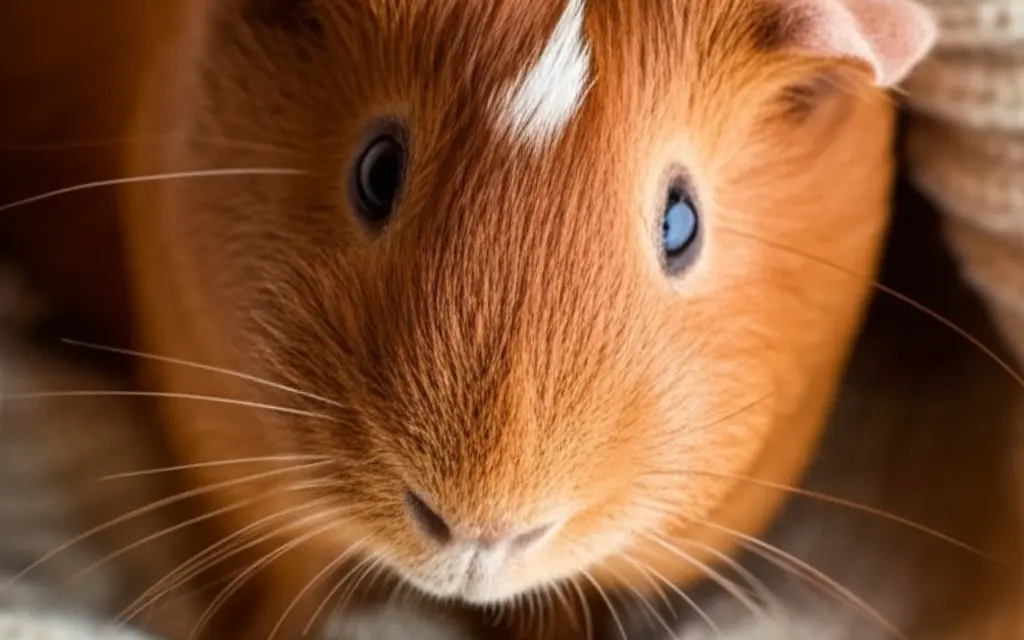Proper hydration is important to keep your guinea pig healthy and active. These little rodents cannot survive more than 24 hours without water. Feeding the right amount of water helps regulate body temperature, digest food, and keep organs functioning.
New piggy parents often get confused about whether their furry friend is getting enough water. So, this post will guide you thoroughly about feeding water to guinea pigs and preventing dehydration.
Why does water matter for guinea pig health?

Role of hydration
It is necessary to provide fresh water to your piggy regularly for the following reasons.
- Regulate body temperature: Proper hydration is necessary. It helps the piggies stay cool as they do not sweat.
- Prevent UTIs and bladder stones: Mineral buildup increases due to not consuming enough water, as dehydration concentrates urine.
- Proper digestion: An adequate amount of water is necessary to move a high fiber diet, like veggies and hay, smoothly through their system.
Regular water needs
Your guinea pig’s daily water needs depend on its environment and diet. They drink 100 to 300 ml ( 3 to 10 oz )of water daily. However, if your piggy is eating more watery veggies like lettuce or cucumber, it may drink less.
Signs of Dehydration
- Hard stools or less frequent urination
- Weakness or lethargy
- Sunken eyes
- Sticky gums or a dry nose.
In the above situations, you can offer water via a syringe ( no needle) and consult a veterinarian.
How to provide water to guinea pigs in the right way?
Choosing the right water delivery system is important when feeding water to guinea pigs. Here are some ways.
Water bottle features
- To prevent tipping, secure mounting is needed.
- The nozzle should be chew-proof and made of thick plastic or metal.
- To avoid toxins, use BPA-free materials.
Water source placement
Setting Up – Always keep water bowls away from the bedding. Hang the bottles at head height.
Train Your Piggy – To show your piggy where the water is, gently tap the bowl/nozzle.
Water bottles vs bowls: pros and cons
| Water Bottles | Bowls |
|---|---|
| ✅ Water intake can be monitored easily. | ✅ Natural drinking posture. |
| ✅ Contamination can be prevented. | ✅ Cleaning is frequently needed. |
| ❌ Natural drinking posture. | ❌ Prone to food debris/ bedding. |
What quality of water is safe for your guinea pigs?

Maintaining the quality of water when feeding the little furballs is necessary. Here are some safe sources of water.
- For sensitive piggies, feeding boiled or filtered water can be the best option.
- Tap water can be fed if the chlorine level is low. To make the chlorine evaporate, let the water sit for 24 hours.
- Always avoid carbonated or distilled water that lacks minerals.
The Best Ways to Clean the Bowls and Bottles
- Rinse the bottles and bowls daily with hot water.
- To kill bacteria, scrub the bowls and bottles with vinegar weekly.
- To prevent stagnation, replace water every 12 to 24 hours.
- If you notice mold or slime in the bottles, then soak them in a 1:1 vinegar-water solution overnight.
5 common mistakes made by new owners
- New piggy parents often feed their guinea pigs juice or supplements to keep them hydrated. However, an excess amount of sugar and vitamins can cause diarrhea or obesity.
- New owners may ignore dripping water bottles, which can lead to wet bedding and thus increase the risk of mold.
- The frequency and amount of water to be fed to these tiny rodents should be increased during summer. However, some new owners may skip seasonal adjustments.
- Some piggy parents assume that veggies like cucumbers, which contain 96% water, can replace water. But, the truth is, even if your piggy is eating watery veggies, they still need fresh water.
- Some new piggy parents may use dirty bowls that promote bacterial growth. So, washing the bowls twice daily is necessary.
How to encourage your guinea pigs to stay hydrated?

There can be different hydration issues if your furry companion avoids water. Here’s how to troubleshoot.
- Some of these tiny furballs prefer bowls, and some may prefer bottles. So, switching the containers can encourage them to drink water easily.
- Celery, bell peppers, and cucumbers are some watery veggies that can provide hydration to your piggy. Offer these veggies after removing the seeds.
- Sometimes your guinea pig may deny drinking plain water. So, to add flavor, mix a drop of pure carrot juice into the water.
Frequently Asked Questions
How often should I change their water?
Even if the water looks clean, it is necessary to refresh it daily.
Can guinea pigs drink from bowls?
Yes, bowls work best in low-bedding, tidy cages. However, monitor for cleanliness.
Can they get water from vegetables alone?
No, veggies do not replace fresh water. However, they can supplement hydration to some extent.
Is bottled water safe?
Mineral or spring water is safe for your piggies. However, avoid flavored or carbonated varieties.
Final touchup
It is quite easy to feed water to your guinea pigs if you are aware of the basics, like using a clean bottle or bowl, refreshing daily, and checking for signs of dehydration.
As these tiny rodents cannot survive more than 24 hours without water, so call a vet if refusal lasts more than 24 hours or if it is paired with illness signs.
I hope this post will help you keep your beloved pet healthy and happy for years to come.
